The Ministry of Defence has advised that the additional operating cost of deploying HMS Queen Elizabeth and her Carrier Strike Group is currently estimated at £73 million (not including the loss of an F-35 jet).
The information came to light via the following exchange:
John Healey, Shadow Secretary of State for Defence, asked:
“To ask the Secretary of State for Defence, what the cost has been of maintaining the seven month deployment of the Carrier Strike Group to the Indo-Pacific to date.”
James Heappey, Parliamentary Under-Secretary of State for Defence, responded:
“The additional operating cost of deploying the Carrier Strike Group is currently estimated at £73 million, this covers any costs incurred above what those personnel and capabilities deployed would usually cost to defence, for example fuel costs, operational allowances, and other incidental costs. Further work is ongoing to refine those cost estimates and provide a final figure.”
The deployment, to me at least, seems like good value for money when considering the number of countries visited. Don’t take my word for it, here’s a list. There’s a more detailed list here.
| Country/ Overseas Territory | Engagement |
| Australia | Passing Exercise (PASSEX), air interaction, Exercise BERSAMA GOLD. (Five Powers Defence Arrangements Exercise hosted by Malaysia with participants from Australia, Malaysia, New Zealand, Singapore and the UK.) Maritime Partnership Exercise (with US and Japan). Press Release |
| Bahrain | Participation in the CDS-led Dragon Group. Press Release |
| Bangladesh | Port Visit to Chattogram. Press Release |
| British Indian Ocean Territory | Port Visit to Diego Garcia. |
| Brunei | Port Visit to Bandar Seri Begawan. |
| Cambodia | Virtual Defence Engagement. |
| Canada | N/A |
| Cyprus | Port Visit to Limassol and Larnaca. |
| Djibouti | Port Visit to Djibouti and support to Allied Appreciation Fly Past. Press Release |
| Egypt | Port Visit to Alexandria, Defence Engagement. |
| France | N/A |
| Georgia | Port Visit to Batumi. |
| Gibraltar | Port Visit and hosted reception at sea. |
| Greece | Port Visit to Piraeus and Souda. |
| Guam | Port visit to Guam. |
| India | Port Visit to Goa and Mumbai. Defence Engagement |
| Indonesia | Port visit to Jakarta and Virtual Defence Engagement. |
| Iraq | Participation in the CDS-led Dragon Group. |
| Israel | Port Visit to Haifa. |
| Italy | Port Visit to Augusta, Messina and Taranto. Defence Engagement, including a trilateral meeting between the UK, Italy and Turkey which was hosted by the Secretary of State for Defence. Press Release Co Host – North Atlantic Council Defence Engagement. |
| Japan | Port visits to Sasebo, Yokosuka, Funakoshi. Reception and capability demonstration. |
| Jordan | Port Visit to Aqaba and participation in the CDS-led Dragon Group. |
| Kenya | Port Visit to Mombasa. Defence Engagement supported by the Minister for the Armed Forces. |
| Kuwait | Participation in the CDS-led Dragon Group. |
| Malaysia | N/A |
| Malta | Port Visit to Valletta. |
| Montenegro | Port visit to Bar, Reception and Capability Demonstration. Defence Engagement, including an event led by Minister of State (Lords). Press Release Press Release |
| Netherlands | Integrated Partner. |
| New Zealand | Not Applicable. |
| Oman | Port Visit to Duqm and Muscat which included Defence Engagement led by the Secretary of State for Defence. Press Release Participation in the CDS-led Dragon Group. |
| Pakistan | Port Visit to Karachi. |
| Portugal | Port Visit to Lisbon. |
| Qatar | Participation in the CDS-led Dragon Group. |
| Republic of Korea | Defence Engagement – at sea reception and capability demonstration. |
| Romania | Port Visit to Constanta. |
| Saudi Arabia | Port Visit to Jeddah and Participation in the CDS-led Dragon Group. |
| Singapore | Port visit to Sembawang. Reception and capability demonstration. |
| Spain | Port Visit to Alicante, Cartagena, Palma, Barcelona, La Coruna, and Rota. |
| Sri Lanka | Port Visit to Colombo. |
| Thailand | Virtual Defence Engagement. |
| Turkey | Port Visit to Istanbul, with Defence Engagement, including a trilateral meeting between the UK, Italy and Turkey which was hosted by the Secretary of State for Defence. Press Release Press Release |
| United Arab Emirates | Participation in the CDS-led Dragon Group. |
| Ukraine | Port Visit to Odessa, with Defence Engagement led by the Minister for Defence Procurement. Press Release |
| United States of America | Integrated Partner. |
| Vietnam | Port Visit to Da Nang and virtual Defence Engagement. |
| NATO* | At-sea NATO Ambassadorial visit, hosted by the Minister for Defence Procurement, and capability demonstrations. Press Release |


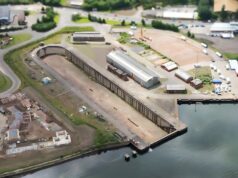
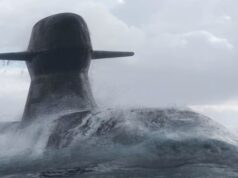


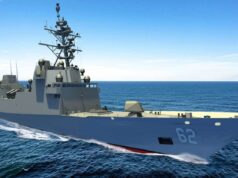
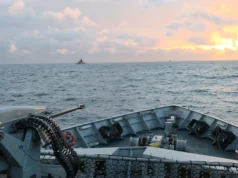

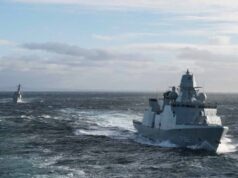
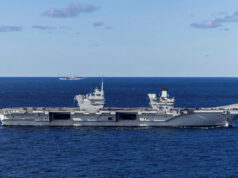
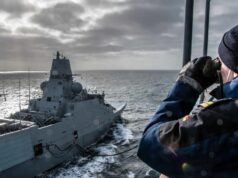

That is astonishingly good value for money!
That’s outstanding value I think.
Let’s not forget though that the CSG was procured to do just this kind of work and so a proportion capital and routine running costs should be considered too in my honest opinion.
A resounding success and good value considering what it did for the UK’s standing in those countries visited and engaged in exercises.
As both current commentators have said, £73M is plenty of bang for you money. They probably wasted more than that on the failed “Track and Trace” !
the failed ‘track and trace’ figure has an extra zero at the end!
NHS Track and Trace has cost £37billion, and I am sure that at least some of that amount has been wasted.
https://www.independent.co.uk/news/uk/politics/coronavirus-test-trace-dido-harding-report-b1814714.html
Does anyone know the running cost of the 3 Invincibles?
Not all 3 but in 1982 the cost a day of the Falklands task force was apparently Naafi queue dit £1millon every 24hrs
Amazing value-for-money
To contextualise what awesome value that is The NHS spends 73 million every four hours…..
Not much chance of anything rollong off that pile of junk anytime soon
Wheelbarrows?
Possibly 😀The solid ones built in the 1930’s maybe currently used to move the latest models of the next soviet super carrier around before they tip them into the sea.
Russian and Chinese arms deal China gets Stealth tech, Russia gets Wheelbarrows fair-trade 1 you can see the other has square wheel
We roll a single plane off a carrier, didn’t the Russians roll a whole aircraft Carrier, the Admiral Kuznetsov, off the floating dry dock it was in 😉
The Russians lost a SU33 and a MIG29 in as many weeks, with arrestor gear failure. And a fire on-board the vessel killed a guy back in 2016. Now the carrier is junk.
Most likely done by Stan, of Laurel and Hardy frame!
It costs money to maintain a Navy. As Britain has shown, control of sealants is of national security. A country dies without access to trade, around the world.
Especially, around the propellors.
Very good 🤣
What would we do without Amazon
It should be remembered that the 73 million is just the UK additional cost. Plenty of allies also spent money. In saying that, I doubt you can find a single government or navy complaining. If you compare with the money so far spent (I suspect wasted) on a very sub par Ajax, this is peanuts. Half the world actually noticed a RN Aircraft carrier was out & about. The fact that others were directly involved (rather than all RN), guaranteed wider exposure. Even if your ship or mpa was only involved for a few days, you made the news. If this was a PR campaign selling potato crisps, you would think you had a bargain.
So in summary the loss of the f35 was substantially more financially than the total deployment
I must admit it’s a pleasant surprise to get value for money from military endeavours
Not much point in having aircraft carriers etc. unless they are used. To keep them rusting away in porrt would be a real waste of money.
Sorry guys, but “incurs cost over and above manning, fuel etc…” So, a million per port visit and munitions expended on ISIS.
RN sure do throw some great parties!
Very bizarre/misleading way to cost a deployment that leads to an artificially low estimate.
The full cost should include all labour costs i.e. wages, pensions, training and a proportion of the capital costs/depreciation of the carrier. This cost would be far higher.
in very very rough estimates:
The carriers cost approx £4bn each @50 year life that’s £80m/year depreciation (ignoring time value)
700 crew members, average salary £50k, full employment cost (benefits, pension, training, salary, payroll taxes) probably closer to £150k. £150k*700 = £105m
Incremental costs as in the article = £10m/month
Total cost per year circa £300m before it’s fired any weapons or crashed any F35s. This is a barebones estimate.
Add on operational costs of frigates/submarines and air group and the price really ramps up.
50 k average salary. I wasnt making that as a top of the tree Warrant Officer on maximum sea pay!
The costs you quote would be paid anyway deployment or no deployment so they are not included in the calculation.
Well WO pay today starts at £49,842 without sea pay. Even long term killicks with allowances will be getting close to this figure, add in officers and it’s order of magnitude correct. It costs the employer (RN) significantly more than this to employ you.
The costs are not paid unless a navy is required in the first place and it is a debate of relevant/marginal/absorption costing. You don’t buy a carrier unless it is needed for deployment so to say the only cost is fuel and food because everything else is paid for it misleading. £73m is the absolute lowest figure they could come up with.
Disagree.
If the carriers sit in port, crewed up their entire lives those expenses will still be paid. The 70m is on top of that, roughly 300k per day, for two destroyers, two frigate, two RFA and a carrier. Thats crazy cheap.
It’s cheap because it’s misleading, incremental costing is not really appropriate here.
It’s the same as saying the only cost of driving my car is petrol. Technically correct on a day to day basis but if you only budget for petrol you won’t be able to afford a car.
But if you have to buy a car for a work commute that you need to do, say, 4 days a week for 48 weeks in a year with all other journeys optional then the cost of the car and basic running costs are necessary for the essential work trips no matter how many leisure related drives you do. The cost of using the car for a weeks holiday is then purely the additional cost for fuel, extra distance insurance if needed, and maintenance delta for the additional miles.
It’s accounting principles and could be debated until the end of time. It’s not how we charge the customer (I used to consolidate for all the Portsmouth ships) Going to sea is not really an optional requirement for a warship. They are purchased specifically for it and have no other purpose (harbour training excluded)
It depends what you want the figures for. Incremental costing shows the cost of a deployment as against the cost of not deploying – that can be useful information if you are looking at the activity levels. I remember in my army service that activity levels were often suppressed to save money – useful to know how much money was saved.
Not at all.
The carrier and her task group would have been crewed and used no matter what. So while this is the ‘additional’ cost of going on the exercise, to say it’s the cost of the exercise isn’t really wrong.
Anyway, buzz off with your negativity towards this good news.
It was literally my job to price up the ships and work out how much to charge the MOD but whatever. Thanks for disagreeing, perhaps read my other posts.
It’s obvious why you don’t do it anymore.
That’s quite unnecessarily rude especially when it’s clear you haven’t understood or tried to understand anything I posted. Fwiw it’s worth I’m now in a more senior position on a larger contract in the industry. You’re obviously one of those people who likes to argue and knows more than everybody else…
I think many of the costs you identify would be incurred if the ships were tied up in Pompey, and the crews on the lash somewhere. I believe the £73 million are the additional marginal costs over and above those fixed costs.
When you compare the cost of the entire deployment to losing just one (1) F35 Jet – which cost about 100 Million UKP – it’s a shocker. We can’t be losing a lot of these planes. Whatever caused that problem has to be thoroughly publicly understood and lessons learned. WOW.
Did they include the Cost of alll those Sausages consumed ?
No. The sailors would have eaten sausages even if they were not on a deployment.
Just adding ,the cost of RAS stores mid deployment, or Purchase from Foreign stores
The port chandler who provides the shore services in ports is a big cost. They sort out Tugs, port fees, gangway provision, Gensets, transport, food, spares delivery, customs clearance, personnel arrivals and departures etc…it all adds up.
In the USN they have just had another huge fraud case with their Contractor and its also the same one that the RN has used for a number of years in the past and present.
US Navy hit by another international bribery scandal | Stars and Stripes
How dare build ships and use them!
Waste of money, loads of other things need fixing first like our roads!
Do you want a third world war because of failure of deterrence? You would not be interested in potholes if that happened.
Isn’t 4 nuclear subs patrolling the worldS oceans enough?? At horrendous cost
I genuinely thought a zero had been missed off here…very impressed!
The Queen Elizabeth Carrier class is a sub par carrier class design. It only has one type of plane that it carries. This limits Greatly the range, detection, attack, defense, that a carrier with arresting and launching capability would have. The Brits afforded this capability for many years.But have allowed the Royal Navy to be degraded bit by bit. Only, real war fighting capability should be considered, not looking good as if on parade. For years the QE was planned to be a full angled deck carrier with arresting gear and launching capabilities, every few years the newest plans showed a carrier that had less capability. Finally, culminating in a first cruise, where most of its actual war fighting planes weren’t even Britsh….
Naval Aviation is dangerous, you must account for losses ahead of time, in my career, I can off hand remember 9 crashes with loss of life, in squadrons which I was assigned to when the crash occurred. 24 year career, USN, retired in 1993. Those were peace time losses.. I didn’t count war time operations….